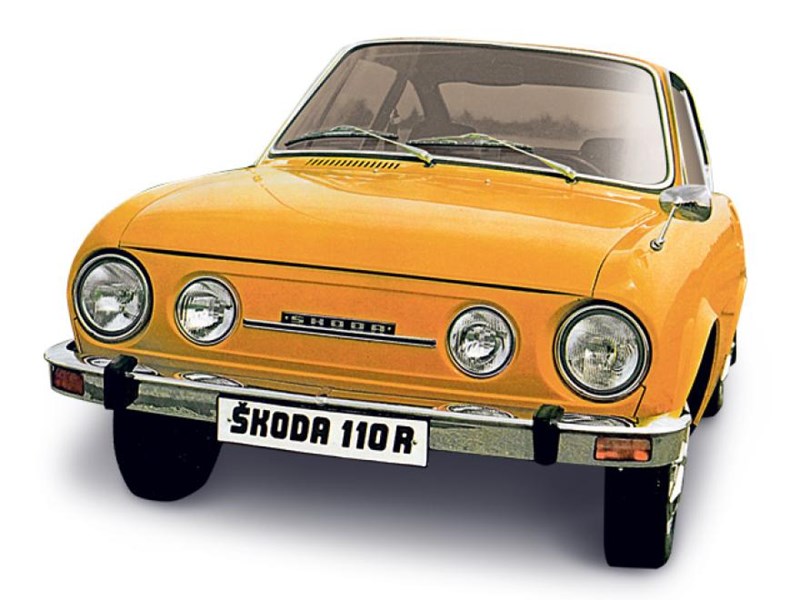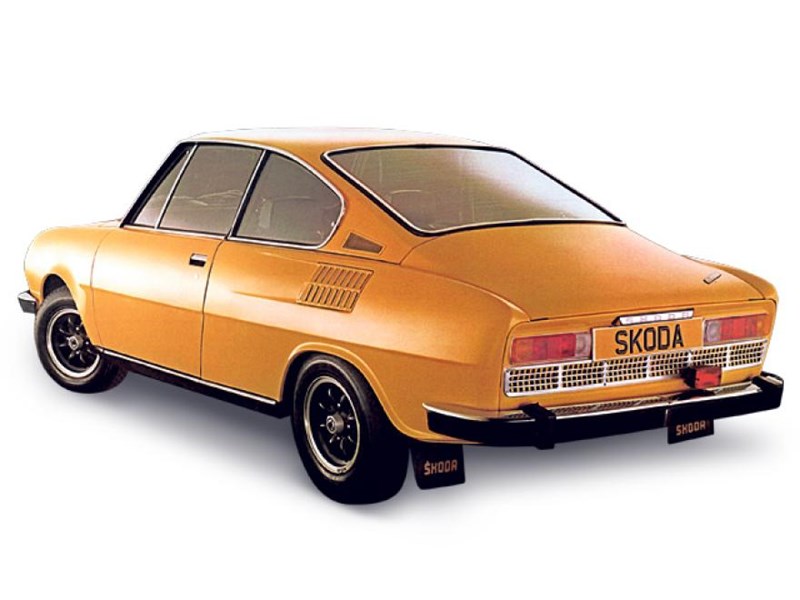Rear-engined coupé thrills for a fraction of Porsche 911 prices? Buy the surprising Skoda S110R.
On paper, the Skoda S110R is simply a coupé version of the rear-engined 110 saloon. In reality, not only was the Czech-built fastback a handsome machine, but competent both on the road and on the track. While fire-breathing competition iants stormed rally stages, more than 57,000 roadgoing examples rolled out of Skoda’s Kvasiny factory between 1970 and 1981. Lively, if not eye-watering, performance from the 1107cc four-pot, coupled to an entertaining chassis means that, providing you can find one, the ’70s 2+2 is a first-class choice for driving enjoyment.
WHY SHOULD I BUY ONE?
Although Skoda’s image has only improved in recent years to those in the know, the rear-engined Skodas have always polarised opinion. Attractive and with plenty of Eastern European charm, the S110R is a hoot if you like your classics to be just a little different from the norm. Not only can they be a lot of fun, but ownership is unlikely to break the bank, thanks to low running costs – provided you don’t have to search for replacement parts. Coupled with a vibrant club scene, the Skoda makes a very friendly route into the classic car world.
VITAL STATISTICS
SKODA S110R
Engine 1107cc/4-cyl/OHV
Power 62bhp@5500rpm
Torque 64lb ft@3500rpm
Top Speed 90mph
0-60mph 17.7sec
Economy 33mpg
Gearbox 4-speed manual
WHAT TO LOOK FOR
BODYWORK
The S110R’s steel outer panels are all bolt-on items, so the key to the car’s strength lies with the monocoque bodyshell. Check the rear of the sills for crustiness – water ingress due to a failed seal between the rear wing and body can wreak havoc. Also rust-prone but difficult to repair are the rear suspension trailing-arm mounting points – ensure that you inspect these closely. The boot hinge mounts are similarly vulnerable to corrosion.
The coupé’s rear panels are unique to the model, as are the doors, which are longer than saloon items. As the latter have a habit of rotting out, take a close look at their lower edges – repairs could be required. The front wings and front panel are shared with the saloons, although you’ll be doing well if you can find replacement body panels – everything is scarce, so don’t underestimate the work involved on a scruffy S110R. Glassfibre front wings are available in the UK, however, but you’ll need to search the Czech Republic for GRP panels which replicate the bulging lines of the 130RS.
ENGINE
The 1107cc slant-four features a cast-iron cylinderhead perched on top of an aluminium block, fed by a twin-choke Jikov carburettor. Provided the cooling system, which uses a front-mounted radiator, is in good condition, this set-up should be more than capable of the task of cooling the engine. However, if this has been neglected in the past and anti-freeze levels allowed to drop, then
the aluminium waterways will have suffered, in extreme cases leading to the block cracking.
Cylinderheads can crack between cylinders, causing rough running, while mating faces can warp. Also make the usual checks for ‘mayonnaise’ in the oil, suggesting head gasket failure. A clonking sound while the engine is running could simply be that an engine mount has failed, allowing block and bodywork to meet. Ask if the engine oil has been changed every 3000 miles.
RUNNING GEAR
The four-speed gearbox not only has synchromesh on all gears, but is unlikely to cause trouble, provided its lubricant has been changed every 12,000 miles. A stubbornness to engage second or third gear, however, spells replacement. To improve motorway cruising, a five-speed unit from a later rear-engine Skoda can be fitted – provided the gearbox tunnel is altered. In extreme cases, the differential can strip its gears.
The independent suspension uses coil springs all round, together with swing axles at the rear. This set-up requires greasing every 6000 miles to keep it in fine form – ask the owner if this has been done.
The front disc and rear drum brakes are pretty standard fare, with the option when new of servo assistance. Later 120 Estelles used this system, which aids spares sourcing.
INTERIOR
Interior trim isn’t especially durable, made worse by the unavailability of replacement items. In ‘70s Eastern European fashion, the dash switchgear isn’t particularly sturdy, so be prepared for a long search if any is missing or broken.

